I rarely cook holiday food, at least not on any actual holiday. For example, we eat potato pancakes – latkes – all year round, and not necessarily on Hanukkah. Still, last year the holiday coincided with plans for a dinner party, which gave us a latkes itch that needed to be scratched. When it’s just Jackie and me, we usually eat latkes on their own with sour cream and applesauce, or sometimes with smoked salmon. But an entire meal of latkes for half a dozen people would involve so much grating and frying that the fun would go out of the preparation.
So, the pancakes would be a side dish. For what? For braised brisket: the meat and its sauce are just about ideal for the purpose, and leftovers never lose their allure. (And there were lots of leftovers: The dinner party had to be cancelled, so it was just the two of us at the table.) In braising, there’s nothing wrong with employing the usual flavors of aromatics, wine and herbs, but I wanted a new twist to a favorite dish and contemplated ingredients that would be unexpected but not goofy. My thoughts went back to our recent four days in Berlin. There, during dinner at the restaurant Eins44, we ate a couple of dishes in which coffee and chocolate (separately) were used subtly and successfully. I’ve used chocolate quite a lot over the years, notably to enrich my version of chili and in a few other stews, but coffee grounds? Not to my recollection, except in cake-baking.
The coffee put me in mind of port wine: Both are drunk after dinner and both are complex and aromatic; it seemed to me that they’d also be complementary (and port is a fine cooking wine in its own right). Those would be my unexpected but not goofy ingredients. It was now a matter of balance.
I bought a whole beef brisket (about eight pounds – 3.6 kg – with the idea that I’d turn half of it into corned beef, which I did). For braising, I used the so-called second cut, or point: the thicker, fattier end of the brisket with a more complicated musculature. The day before cooking – which was in turn two days before eating – I salted it generously, rewrapped it in butcher’s paper and left it in the fridge. The next morning, I used twine to tie it into a more compact shape (optional), seasoned it with pepper and more salt, dusted it with flour (also optional) and browned it in an enameled cast iron casserole, about eight minutes on each side over medium-low heat with a little oil to get it started.
While it was browning, I cut my aromatics into roughly 3/8-inch (1-cm) dice: a medium onion, a decent-sized leek (the white and the lighter green parts), a big carrot, a stalk of celery (leaves and all) and one big clove of garlic cut in two. I removed the browned meat to a plate and added the aromatics to the pot with a little more oil (the added oil may not be necessary, so use your judgment). I also added the somewhat tough base of a clump of hen-of-the-woods mushrooms, also diced (if you like, you could sauté the remainder of the mushrooms and add them to the sauce when serving). Here you could use couple of ounces (60 g) of any fresh mushroom you like, or even a few dried porcini/ceps. Or you can omit the mushrooms altogether, though they do give savoriness a head start. I stirred the vegetables every now and again and cooked them until very slightly browned. Then I added a handful of fresh parsley, a couple of branches of thyme and a small dried chipotle chili, whole (optional), followed by a cup (240 ml) of red wine. I raised the heat and reduced the wine until it smelled less raw, then added 1/3 cup (about 30 g) of coarsely ground coffee (use whatever blend you drink), 2/3 cup (160 ml) of port and two cups (475 ml) of stock and returned the browned meat to the pan, topping it with a round piece of parchment paper to tuck it in before covering the pan. In an ideal world, I’d have used a good brown veal stock, but in real life I used what I had: a mixture of chicken stock and a light beef stock.
Note that the quantity of liquid will vary depending on the size of your brisket and the dimensions of your braising pan; use the prescribed amounts of the two wines, then add enough stock to submerge about two thirds of the meat or a little more.
This cooked unattended for 90 minutes in an oven heated to 325º F (165º C); I then turned the meat over (yes, I could smell the coffee along with all the other aromas) and returned it to the oven for another hour and a half (check for doneness after 45 minutes). It was tender when probed with a metal skewer, but not falling apart – which it shouldn’t be unless you’re planning to shred it rather than slice it. I removed the casserole from the oven and let it cool, still covered, for a good half hour. Then the meat was set onto a plate, its twine removed, and, covered loosely in waxed paper, was left to cool completely; then I put it into a plastic bag and stowed it in the refrigerator.
Also into the fridge I placed the rich, brown cooking liquid, strained and pressed through a fine strainer (a conical one in my house, but any shape will do so long as it is strong enough to withstand pressure from the sturdy spoon with which you will squeeze out as much goodness from the vegetables as you can).
A while before dinner, I cut 3/8-inch (scant 1 cm) slices of meat while it was still cold, placed them into a shallow saucepan and poured in some of the sauce, from which I’d removed the puck of solidified fat that had formed in the fridge and which I’d tasted to see if it needed to be reduced. I brought this up to the simmer and kept it over very low heat until the meat was warmed through and tender, just a couple of minutes. (If you use the flatter first-cut brisket, just slice away against the grain; my second-cut piece consisted of two muscles, which I separated before slicing, since the fibers of the two pieces run in different directions.)
I did not thicken the sauce; if you want to, stir a tablespoon of corn starch (corn flour in the UK) into a little of the cold sauce (or water) and whisk it little by little into the simmering liquid until it has reached the desired consistency.
The first wave of flavor is that of beef, wine and vegetables – not unexpected. But then the coffee sneaks up on you: it is unmistakably and intriguingly present but is part of a well balanced ensemble. Sure, you could serve this with mashed potatoes, but, boy, was it good with latkes!
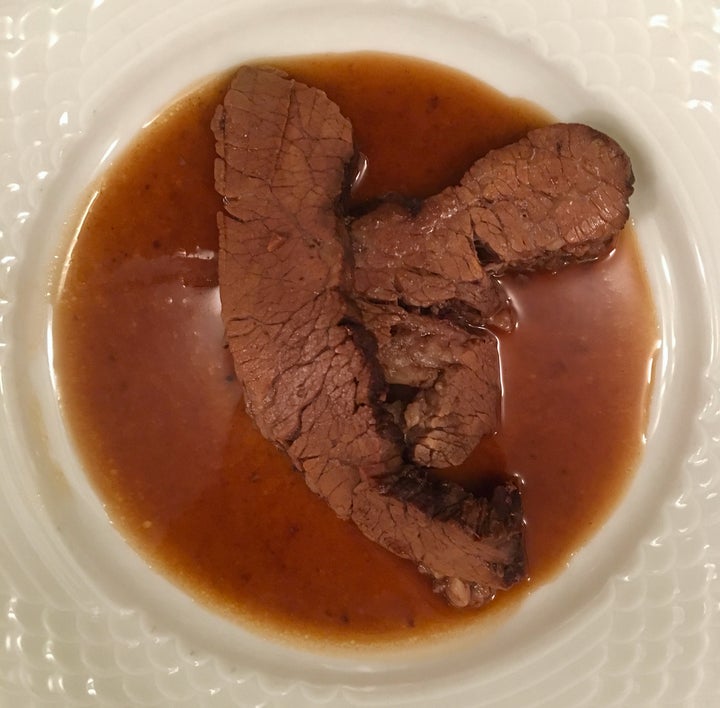
Braised brisket, its rich brown sauce flavored with coffee
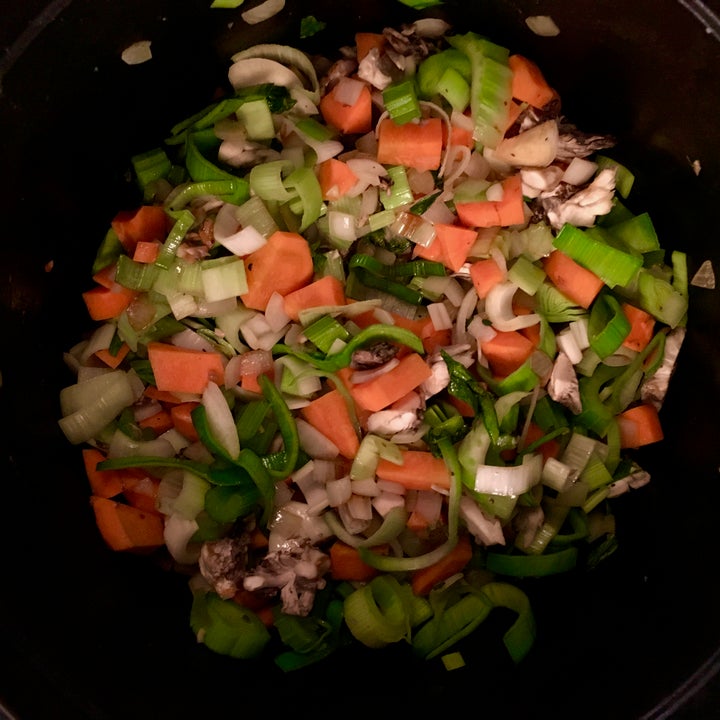
After the meat has been browned, add the aromatic vegetables and mushrooms
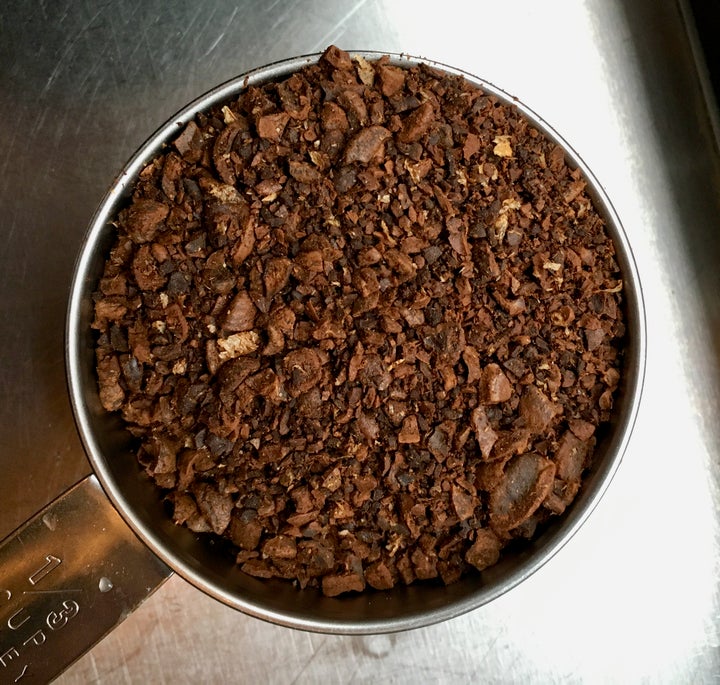
I used 1/3 cup (about 30 g) of coarsely ground coffee
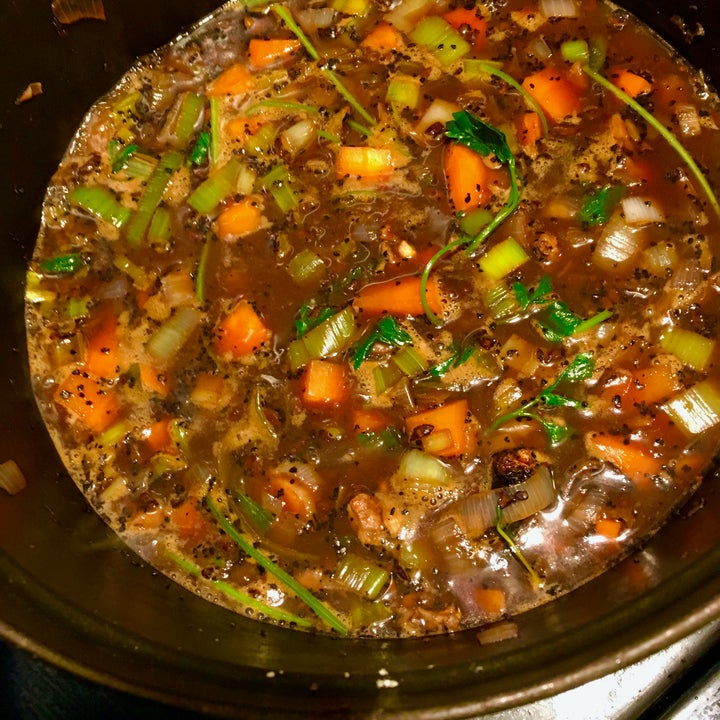
Thanks to the coffee and wine, the sauce looks rich right from the start

The browned brisket returned to the casserole for braising
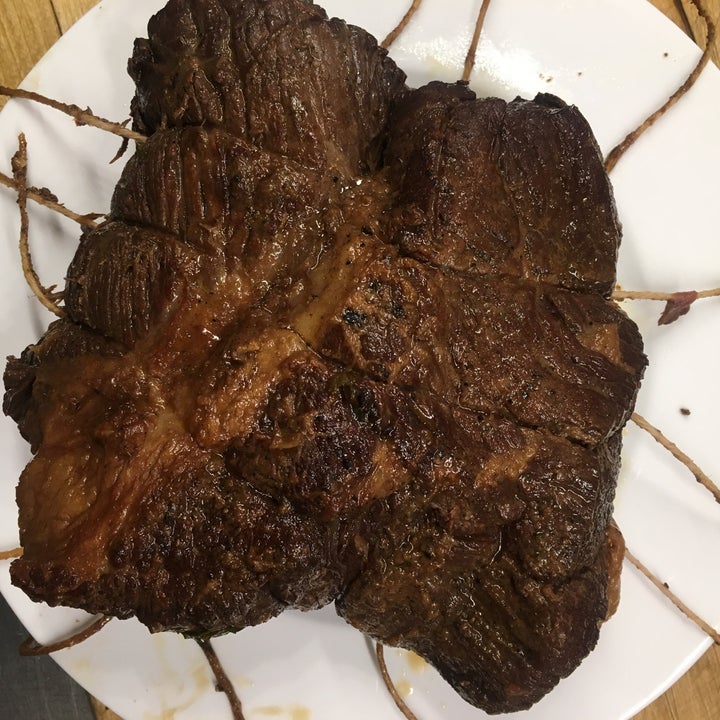
When it’s done, free the brisket from its butcher’s twine if you’ve used it
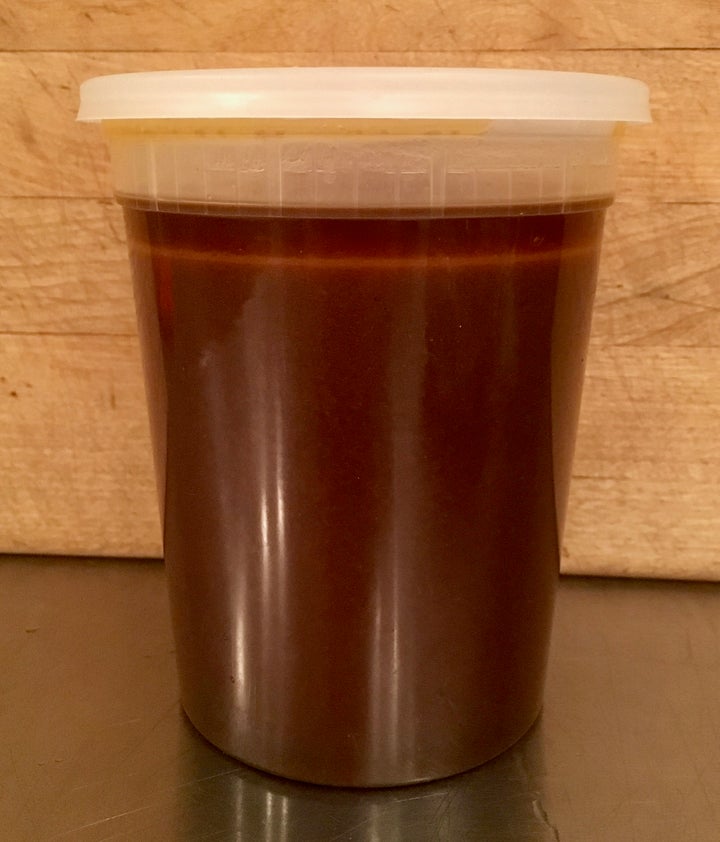
Almost a quart (liter) of sauce; the fat will congeal in the fridge and can then be removed in one piece
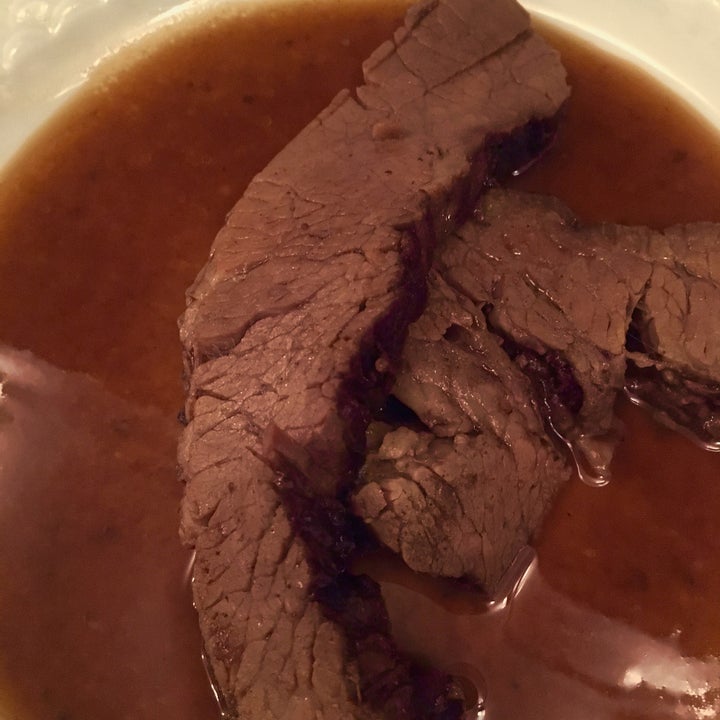
Beef brisket braised with coffee and port wine